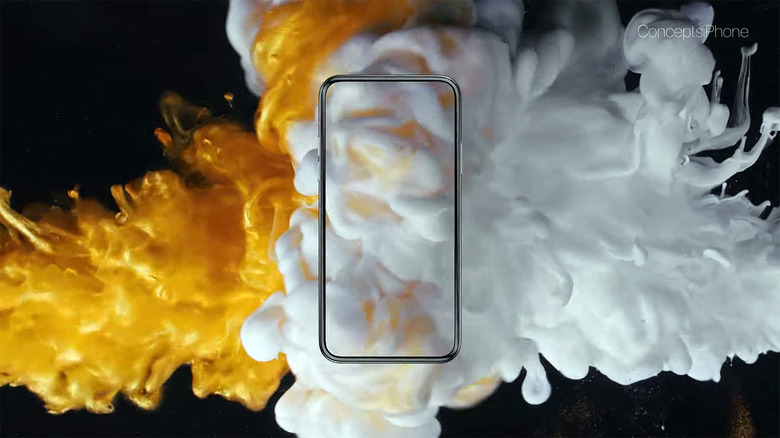This Could Be The Worst Thing About Next Year's iPhone 12
By all accounts, Apple's new iPhone 11, iPhone 11 Pro, and iPhone 11 Pro Max are a resounding success. The new iPhone 11 lineup was released just under one month ago and we've seen almost universal praise from reviewers and end-users alike. The new cameras — especially the triple-lens camera on the iPhone 11 Pro and iPhone 11 Pro Max — appear to be the upgrade that people are most excited about this year, and that certainly makes sense. Apple had been the market leader in smartphone cameras for years, but the company lost its crown when rivals like Google and Huawei stepped up their mobile photography efforts. In 2019, however, Apple's new iPhones retook the smartphone camera throne. In fact, not even Google's just-announced Pixel 4 series manage to top the iPhone 11 Pro, as we're now seeing in early camera comparisons. Many people expected the Pixel 4 to have the edge, but that's clearly not the case at all. And what's particularly crazy is that Apple's iPhone 11 cameras are about to get even better once the new Deep Fusion feature is released to the public. Currently available to preview in the iOS 13.2 beta, Deep Fusion has already been shown to dramatically improve photo clarity and color reproduction in medium lighting.
Of course, no smartphone is perfect and you won't find any exceptions in the iPhone 11 series. The biggest issue for the time being seems to be iOS 13. RAM management issues similar to the ones that plagued iOS 11 appear to be having a significant impact on performance, and we've seen plenty of evidence of this. But there's also a key feature that's missing from this year's iPhone lineup, particularly when it comes to the high-end iPhone 11 Pro and iPhone 11 Pro Max. Apple fans might deny it, but there's one very important feature that these new flagships should absolutely have. The good news is this missing feature is finally coming to the iPhone 12 series next year, but the bad news is it's reportedly going to have an unwanted side effect.
What's this important feature that's missing from the iPhone 11, iPhone 11 Pro, and iPhone 11 Pro Max? 5G. Apple fans have argued repeatedly that 5G support isn't important right now because 5G coverage is still so scarce, and there is no question whatsoever that this is true. But what these hardcore Apple fans always seem to forget is that most people aren't gadget fanatics who upgrade their smartphones every year.
People hold onto their phones for longer and longer these days. In fact, there's plenty of data to suggest that the most widely-used iPhone models in the worst at this very moment are the iPhone 7 and iPhone 6s, which were released in 2016 and 2015, respectively. So many people will still be using their iPhone 11 and iPhone 11 Pro models three, four, and even years from now, and they won't have access to 5G networks despite having paid as much as $1,500 for their iPhones. That would be like using a flagship phone today that's not compatible with 4G LTE networks.
In a note to clients earlier this month, TF International Securities analyst Ming-Chi Kuo reported that the iPhone 12 and iPhone 12 Pro smartphones coming next year will finally be compatible with 5G. Kuo is easily the most accurate Apple insider out there, so this is certainly great news for Apple customers who won't see their iPhones rendered obsolete in a few years by a lack of network compatibility. But the addition of 5G will apparently come with an unwanted consequence that could end up being the worst thing about next year's iPhone 12 models.
Something must have been lost in translation when Western Apple blogs got their hands on Kuo's note because we found a tidbit in Chinese-language coverage that definitely went under-reported. According to well-known China-based tech news site MyDrivers, Apple's new iPhone 12 models will also be much more expensive thanks to the addition of 5G support.
Apple's flagship iPhone models have started at the sky-high $999 price point ever since the iPhone X was released in 2017. Now, the iPhone 11 Pro starts at $999 and the iPhone 11 Pro Max goes all the way up to $1,449 before taxes. While the MyDrivers report doesn't mention any specific price points because Kuo undoubtedly isn't yet aware of them, it looks like getting your hands on an iPhone 12 model with 5G will cost even more money.
The upcoming iPhone 12 and iPhone 12 Pro smartphones Apple is reportedly planning to release next year are said to feature an all-new design with flat edges like the iPhone 4 and iPhone 5 designs people loved so much. They also might have smaller notches or even an all-screen design like the ones we've seen this year on Android flagships. Apple fans looking to get their hands on this new design should be prepared to pay handsomely for it, however. It's likely that not all iPhone 12 models will come with 5G support, but people looking to futureproof their iPhone purchases next year will apparently have to pay a healthy premium to do it.
Apple's new iPhone 12 series smartphones aren't expected to be released until September 2020, but we'll learn plenty more about them before then thanks to leaks.
